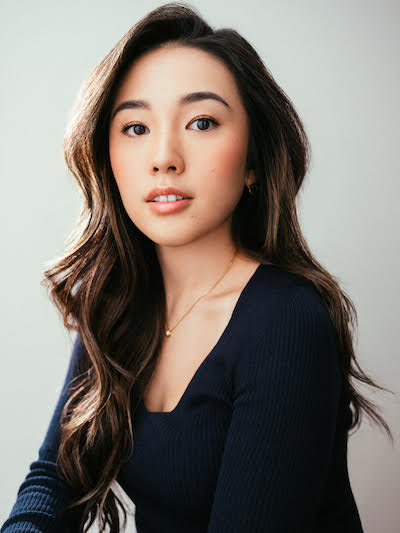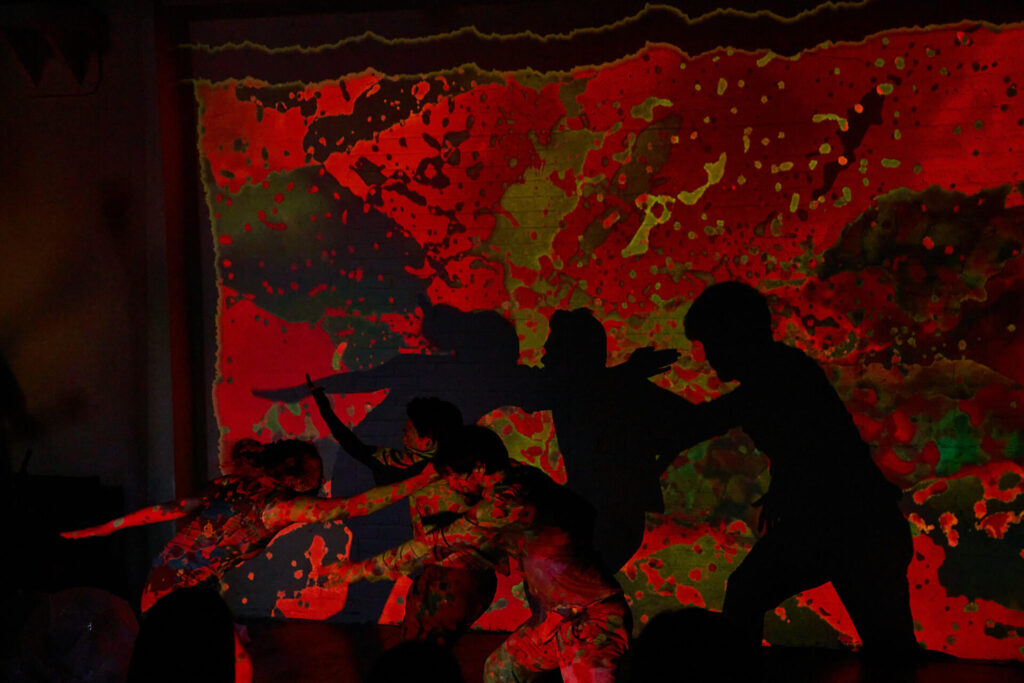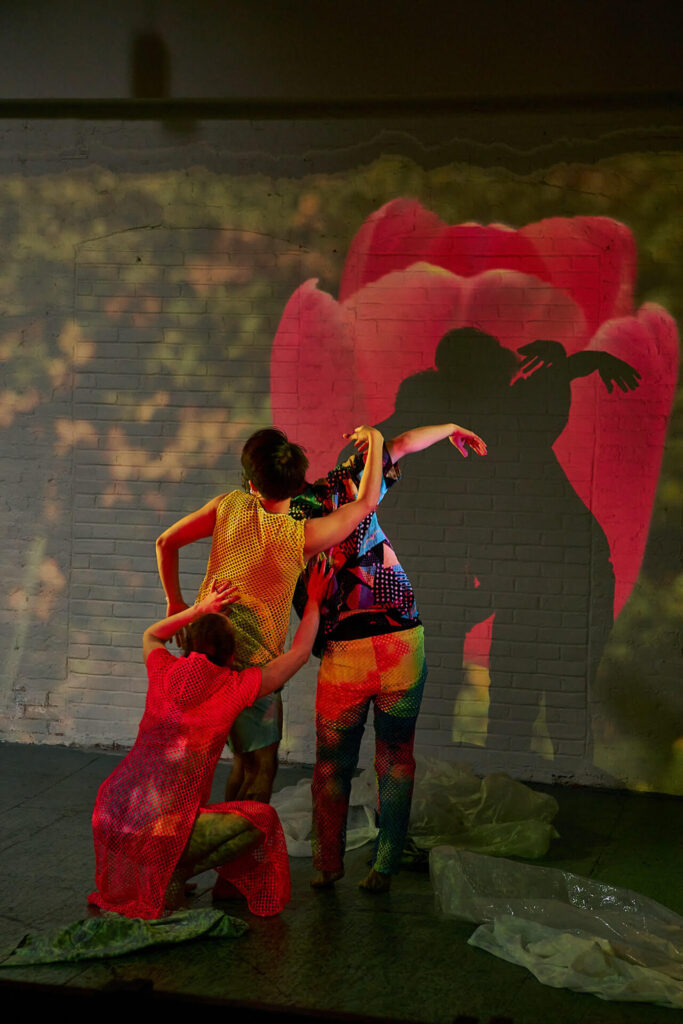
Saki Kawamura is a NYC-based theatre/film director from Japan. Her wide-ranging works can be seen in theater, film, and visual art. Selected Directing credits include IKIGAI: a purpose of living (Encore Award at Hollywood Fringe 2021), The Giving Tree, Precognito, The Man Who Turned Into A Stick, Margaret’s Bed, Spite, and The Librarian and recent production of Iceberg. She was selected as a new Associate Artistic Director of Ren Gyo Soh, a butoh theatre company based in NYC in August 2022. Kawamura has served the company as an intern and then a Program Director for the past two years and helped the company under the hard times of the pandemic. She finished her Master of Fine Arts degree in Directing this May at Actors Studio Drama School at Pace University.
Exclusive Interview with Theater/Film Director Saki Kawamura
Q : At what age did you get interested in doing plays or musical theater? How did that lead to you to study in the US?
S. K: I started classical ballet dance when I was two years old. That was my first on-stage experience. After that, my mom took me to “The Lion King” in Japan. Even though I was just two years old, I was so into it. My mom realized that I had some connection to the theater. She kept bringing me to theatrical performances. I eventually liked theater because of those experiences and when I went to junior high school, I found this very small theater company which did a lot of musicals in English.
That’s how I got into the onstage experience, not through dancing, but singing and acting. I just enjoyed it. I didn’t do anything in college except dancing, but when I was job hunting in Japan, I realized that I really wanted to study theatrical directing. In Japan, there’s no theater school or anything like an MFA or academic school which has a theater department, so I decided to come here.
Q : Of all the drama schools and universities in the US, how did you narrow it down to a specific drama school?
S.K: I decided that I had one year to apply to grad school. I had no idea there was so little information about grad schools for theater in Japan. Some of the theater departments allow students to apply for five years of professional experiences, which I didn’t have at that moment. I basically talked to a lot of people. I emailed a lot of people. I probably emailed most of the schools on the East Coast to see if it was a good fit or not. Some of the schools didn’t have a directing department. That’s how I narrowed it down.
Q : So, you went to the Actors Studio(Drama School at Pace University). How did you decide to go there and what kind of study program did you do?
S.K: I decided to narrow it down to US schools. From those schools that I could apply to, I saw The Actor’s Studio Drama School has a directing department as well. As a director I also had to take acting classes. Also I was very interested in Stanislavsky. And then I wouldn’t say method acting itself, but the way they create a character based on the psychology so I was very interested in learning that as well. That’s how I decided.
Q : After you graduated from this school, what led you to stay in the US rather than go back to Japan? Living in New York City as an artist isn’t easy.
S.K: It was a big decision for sure. I’m currently in OPT which is a year’s long extension after a student visa so it was not hard to stay but it was hard for me to pursue the art to get an artist visa which is what I’m about to do. It’s very scary. Sometimes you don’t have a job, sometimes it’s not stable but I believe that every single thing that I have been involved with will lead to something else. That’s how I keep working.
Q : You continue to make videos for YouTube, and you decided to work with the Ren Gyo Soh, a New York-based Butoh theatre group. You didn’t want to limit your creativity to one thing. Ren Gyo Soh presents a multi-media approach to creativity.
S.K: It’s very flexible so whenever I have something that I want to explore I have tools and resources. I have a place to do [creative work]. That’s something that I really appreciate about being in the company. I think most of the theater companies are like that in New York City. For the YouTube things — I love doing them. I love creating a video, and then getting comments from the audience. People react to what I’m making. I really love those experiences, but also, at my core, I truly see myself as an artist. YouTube is a little different of a platform, that’s why I like to share videos about English, but not necessarily for artistic expression, if that makes sense.
Q : Talk about the members of Ren Gyo Soh. What kind of people are there? How does this environment stimulate you as an artist?
S. K: Ren Gyo Soh has a couple of company members who joined way before me. There are some people who trained as actors but we all take the same training course. It takes two years to become a member which is not officially on the website. I also took two years of courses.

Q : You were managing with the school curriculum and with Ren Gyo Soh at the same time.
S.K: Ren Gyo Soh has a training course. It’s on Zoom right now, but before the pandemic, it was in person so now a lot of people around the country are joining us to get training. You usually have training courses — there’s a spring semester and a fall semester, like a school. We also have training in the summertime as well. I have been taking that. There’s a certain amount of knowledge about what we’re doing in terms of Butoh theater. We are not necessarily a Butoh theater company, but we combine more of the theater elements in using Butoh.
Q : How does that environment stimulate you as an artist?
S.K: When I came here, I struggled to express myself because of how I grew up. A lot of Japanese people can relate to that, but as a Japanese woman, I was told to be quiet and be less expressive. I was told to behave in a certain way, like being employed by a good company and finding a good husband. I was told to grow up like that. I was very, very used to not speaking up at all, or not being expressive when I came here.
It was very, very frustrating for me as an artist, because as an artist, you have to express yourself. Butoh really helped me understand who I am and how to use my experiences through my art. That’s not necessarily the same as the other people, as other American people in this industry. They are more bold and are used to being expressive but I was not. I was able to accept who I am and able to accept what I have experienced and then use it in my art.
Q : Unlike existing works or existing material — which is often done in a Broadway or off Broadway production — your play was conceptualized from scratch. What were you looking for when you chose the subject to tackle?
S.K: I don’t see myself as a playwright but I am a true creator or director. I love to direct but I’m not necessarily a writer. It might be different from an off Broadway or Broadway experience. I love devising works, which is more like giving my team or cast a prompt, a task, and they then create something out of it. As a director, I am a shaper of other voices in the room. That’s how I like to work.
For example, “Iceberg” was coming from being just a 10-minute piece we created. We then talked about before and after we met at Butoh, what were the changes that Butoh made [in our thinking]. I didn’t intend at all the concept of “Iceberg,” but when I was seeing where we were going, I came up with this idea of “Iceberg.” It’s all very, very different, in terms of where the inspiration came from. That’s how I work.
Q : As you mentioned about “Iceberg,” go through the process of collaborating with your actors, musicians and projectionist because, as much as you have certain things in mind, you have to express your vision to those artists, which is not an easy thing to do. How did you collaborate with them and what kind of process did you do with those artists?
S.K: First we did three months of pre-production. The actors and musicians came into the same room together and then we didn’t really do anything that you saw at all. I gave them a prompt, which is like talking about my ideas. They find a partner and talk about a minute about their experience of being lonely in society. Then they talk about it and draw something up. They come up with a movement sequence with one music sequence.
We then combine everything together. And we keep doing that for three sessions so at that moment we have some parts of the three minute piece. Then as the director and creator, I shaped through everything so there were a lot of times I liked going back to the core, to all the materials that we had and then I talked through that with the musicians and the composer. Then he composed music based on the structure that we had.
I listened to the music again after he finished composing and with the music I added some changes or adjustment. We adjusted the piece. That was like three days before that. I had this whole concept packet and a script of the entire sequence so that I can visualize and verbalize a bit more of what’s in my mind. Then it became very clear so it was easy to understand what we were trying to think of. I think we try to make it as visual as possible. It’s the best way to collaborate with the actors, musicians and designers — all those different kinds of people.

Q : When you intertwine with each artist — the actors, musicians and projectionist — how do you maintain your artistic creativity without getting away from your original vision? How do you achieve that balance?
S.K: I love to collaborate with people and I love theater. I also have experience in films, but it’s harder to collaborate in the film industry. At least for me because of a lot of necessary preparations, we can’t collaborate on the set. That’s very different from theater. I’m very open to collaborating in theater. Whenever they have an idea, I definitely listen. I combine them if there’s a time and if there’s a way to do it. But as a director I sometimes have to shut them down as well. But it’s all about the conversation.
Q : In the beginning of “Iceberg” you express that you seemed to hit a wall as an artist. Sometimes, you have to go on a solitary road in order to create something different from the others. So the play is very much a collaborative work. How did you approach that when you wanted to create something new? How do you interact with other artists?
S.K: Even though it’s my vision, it’s important for them to have personal connections [to the work] so that they can take ownership of what they’re doing. I usually talk about not only my experience or vision, but also ask the collaborators about their experiences about a topic or about a theme so that they can relate and think about how they can bring their bodies onto the stage or bring their design on the stage.
Q : It was fascinating, your idea that after the play, you set up a discussion about the play with the audience. That was really intriguing how you not only exchange opinions with the audience but you can also rectify or change things if something is intriguing to you. How did you decide to do this discussion process after the play?
S.K: Ren Gyo Soh always prompts new work. It’s very common for us to have feedback sessions, especially for something like “Iceberg,” which is still so much in the development process. It was a natural decision for us to do them but I also noticed that in order to get some feedback I have to put in all my efforts to make sure that that’s something that can get from feedback if that makes sense. You can’t just show the random pieces. I think as a creator and director, I make a lot of effort to make sure that this thesis delivered enough to the audience about what we are doing. It was a natural decision for us.
Q : You jotted down notes, not just during the discussion on stage, but after you ended the talk. Was that in order to learn more as an artist, to learn more about different ideas?
S.K: For this kind of work, it’s not like a written play, but more of a collaboration, devising new ideas as we go. Sometimes I want to get new ideas from people. I know some directors or writers who only focus on their ideas, but for me as a director and creator, I love to know what people think because I know that helps with what I want to do. I can judge if this is important or if this is not. As long as I am clear on what I want to make, I can easily take others’ opinions and decide what to use or not. It took time for me as an artist to get used to that. But after several years of making these kinds of things, I’m able to decide what to take or not.
Q : Ever since the Black Lives Matter and MeToo movement developed, a lot has changed in the entertainment industry. How do you see yourself as an Asian female artist in your mid-20s? Do you think you have more opportunities in life compared to a few years ago when you arrived?
S.K: For me, it’s so hard to tell. I started focusing more on myself after the Asian hate reaction and Black Lives Matter, because I felt that, as an Asian female artist, I needed to speak up and express my voice. I didn’t really feel comfortable about it, if that makes sense. I was trying to find my own voice after things were happening and tried to bring it into my work. It’s not like I got a lot of opportunities, but I think it’s not necessarily with the Black Lives Matter and response to Asian hate. Because of that, I started thinking about how I could grow in this industry, what I could accomplish, and what I can express by doing this. Right now, as well with Iceberg, I’m focusing on creating a new immigrant story.
Q : You call yourself a multimedia artist, juggling the schedule to work as a director for the play, and as a director for filmmaking, making short videos for YouTube. You have so many singers at the plate. How do you narrow it down to focus? And what things do you want to pursue as an artist in the future?
What kind of direction are you heading in now?
S.K: I do have a lot on my plate and sometimes it’s hard. One of the things I really appreciated with doing “Iceberg” is that I had musicians, composers, designers and actors. I didn’t have to do everything at the same time. That’s a good thing — to have the best collaborators. I’m so picky about who to bring into the room. It’s not necessarily about their skills, but I bring great people into my team so that we can work together. As I started learning, I have been getting a lot more directing jobs. I noticed that creating a good team is an important key for me to work at 100%. That’s something that I’ve been trying to do.
Official site : Ren Gyo Soh


